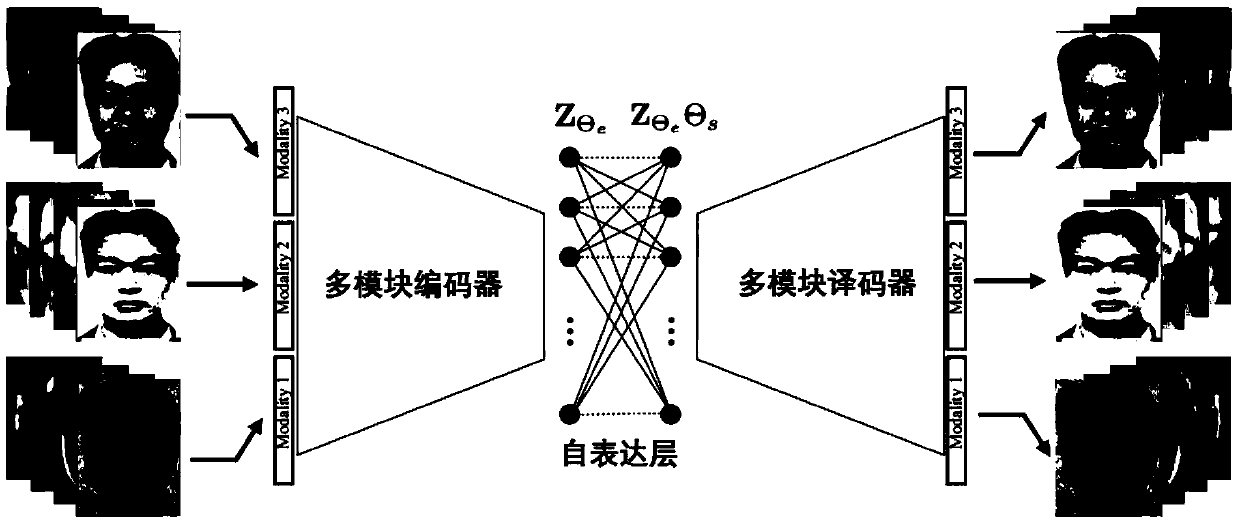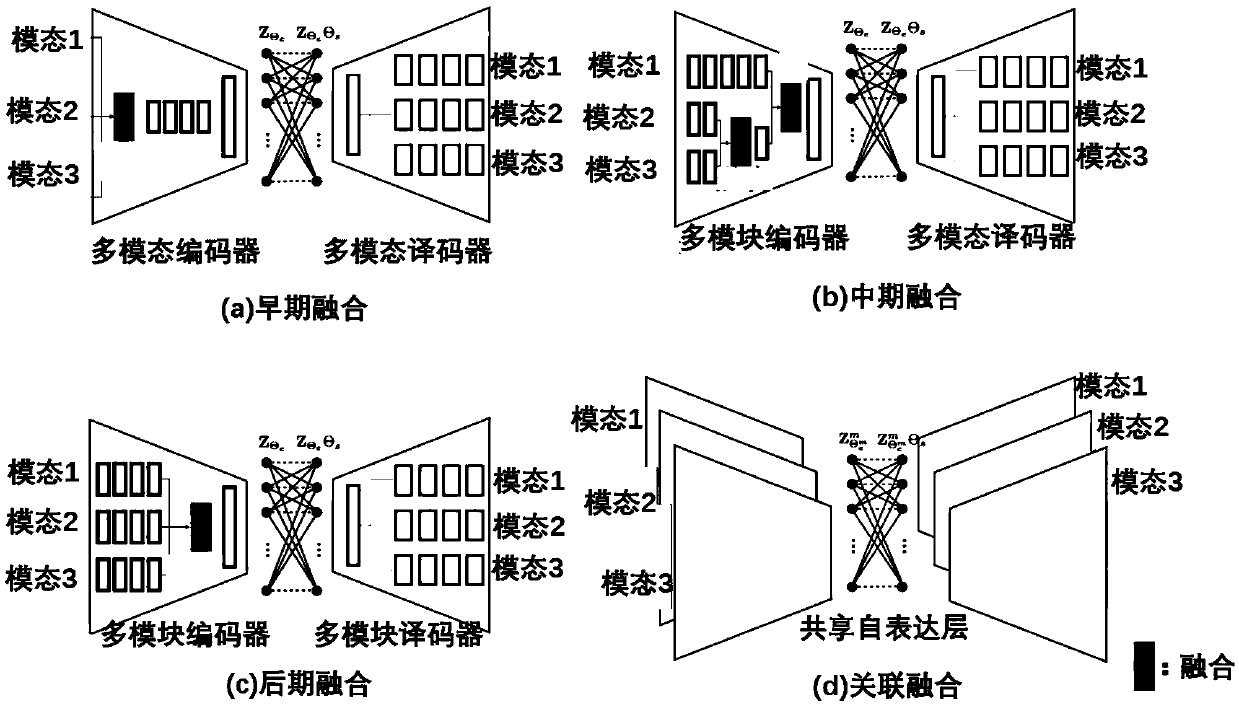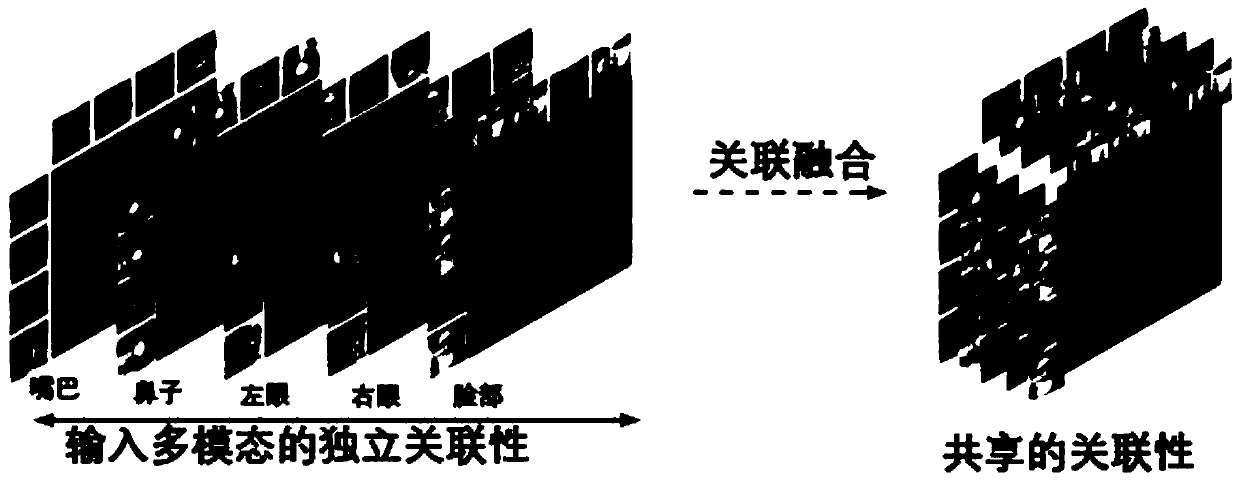Convolutional neural network-based unsupervised multi-modal subspace clustering method
A convolutional neural network, multi-modal technology, applied in the field of unsupervised multi-modal subspace clustering, which can solve problems such as increasing data dimensions
- Summary
- Abstract
- Description
- Claims
- Application Information
AI Technical Summary
Problems solved by technology
Method used
Image
Examples
Embodiment Construction
[0037] It should be noted that, in the case of no conflict, the embodiments in the present application and the features in the embodiments can be combined with each other. The present invention will be further described in detail below in conjunction with the drawings and specific embodiments.
[0038] figure 1 It is a system flowchart of an unsupervised multimodal subspace clustering method based on a convolutional neural network in the present invention. It mainly includes multimodal encoder, self-expression layer and multimodal decoder.
[0039] A multimodal encoder refers to taking multimodal data as input and fusing it into a latent spatial representation through a spatial fusion network.
[0040] Among them, the spatial fusion network uses three different fusion techniques, which can provide modal representations of different spatial positions, and learn a joint representation containing complementary information of different modalities, and each mode in the joint repre...
PUM
 Login to View More
Login to View More Abstract
Description
Claims
Application Information
 Login to View More
Login to View More - R&D
- Intellectual Property
- Life Sciences
- Materials
- Tech Scout
- Unparalleled Data Quality
- Higher Quality Content
- 60% Fewer Hallucinations
Browse by: Latest US Patents, China's latest patents, Technical Efficacy Thesaurus, Application Domain, Technology Topic, Popular Technical Reports.
© 2025 PatSnap. All rights reserved.Legal|Privacy policy|Modern Slavery Act Transparency Statement|Sitemap|About US| Contact US: help@patsnap.com



